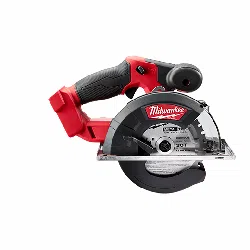Loading ...
Loading ...
Loading ...

6
• When blade is binding, or when interrupting a
cut for any reason, release the trigger and hold
the saw motionless in the material until the
blade comes to a complete stop. Never attempt
to remove the saw from the work or pull the saw
backward while the blade is in motion or kick-
back may occur. Investigate and take corrective
actions to eliminate the cause of blade binding.
• When restarting a saw in the workpiece, centre
the saw blade in the kerf and check that saw
teeth are not engaged into the material. If a saw
blade is binding, it may walk up or kickback from the
workpiece as the saw is restarted.
• Support large panels to minimise the risk of
blade pinching and kickback. Large panels tend
to sag under their own weight. Supports must be
placed under the panel on both sides, near the line
of cut and near the edge of the panel.
• Do not use dull or damaged blades. Unsharpened
or improperly set blades produce narrow kerf caus-
ing excessive friction, blade binding and kickback.
• Blade depth and bevel adjusting locking levers
must be tight and secure before making cut. If
blade adjustment shifts while cutting, it may cause
binding and kickback.
• Use extra caution when sawing into existing
walls or other blind areas. The protruding blade
may cut objects that can cause kickback.
• Adjust the cutting depth to the thickness of the
workpiece. Less than a full tooth of the blade
teeth, or less than 1/4" of the blade, should be vis-
ible below the workpiece. The less blade exposed,
the less chance of binding and kickback. Before cut-
ting, be sure depth and bevel adjustments are tight.
• Stay alert. Any distraction can cause twisting or
binding. Repetitive cuts may lull the user into care-
less movements.
General Operation
Always clamp the workpiece securely on a saw horse
or bench. See “APPLICATIONS” for the correct way
to support your work in dierent situations.
1. Draw a cutting line. Place the front of the shoe on
the edge of the workpiece without making blade
contact. Hold the handle with one hand and the
front handle with the other.
2. Line up the sight line with your cutting line. Position
your arms and body to resist kickback.
3. To start the saw, push the lock-o button down
while pulling the trigger. Allow the motor to reach
full speed before beginning cut.
NOTE: An LED is turned on when the lock o
button is pushed and will go o shortly after the
trigger is released.
4. While cutting, keep the shoe flat against the
workpiece and maintain a rm grip. Do not force
the saw through the workpiece. Forcing a saw can
cause kickback.
5. Use a light, continuous pressure to make the cut
while following the cut line. If making a partial cut,
restarting in mid-cut or correcting direction, allow
the blade to come to a complete stop. To resume
cutting, center the blade in the kerf, back the saw
away from cutting edge a few inches, push the
lock-o button down while pulling the trigger and
re-enter the cut slowly.
6. If the saw binds and stalls, maintain a rm grip
and release the trigger immediately. Hold the saw
motionless in the workpiece until the blade comes
to a complete stop.
7. After nishing a cut, be sure the lower guard closes
and the blade comes to a complete stop before
setting the saw down.
Overload Protection
The overload protector automatically turns o the tool
when the motor is overloaded. The tool can become
overloaded when using a dull blade cutting material
that is too thick, cutting materials too quickly, or cut-
ting hard metals such as stainless steel. To prevent
the overload protector from activating, always use a
sharp blade and follow the cutting instructions under
the "APPLICATIONS" section. Do not attempt to
defeat or override the overload protector.
If the tool turns o automatically:
1. Release the trigger.
2. Remove the blade from the workpiece.
3. Allow the tool to run under no load to ensure the
tool has properly cooled.
4. Resume the cut. When restarting a saw in the
workpiece, center the saw blade in the kerf, or
cut, and check that saw teeth are not engaged
into the material. If saw blade is binding, it may
walk up or kickback from the workpiece as the
saw is restarted.
NOTICE
Continuous overloading may cause
permanent damage to tool or battery
pack.
Electric Brake
The electric brake engages when the trigger is re-
leased, causing the blade to stop and allowing you
to proceed with your work. Generally, the saw blade
stops within two seconds. However, there may be a
delay between the time you release the trigger and
when the brake engages. Occasionally the brake may
miss completely. If the brake misses frequently, the
saw needs servicing by an authorized MILWAUKEE
service facility. The brake is not a substitute for the
guard, and you must always wait for the blade to
stop completely before removing the saw from the
workpiece.
Loading ...
Loading ...
Loading ...
